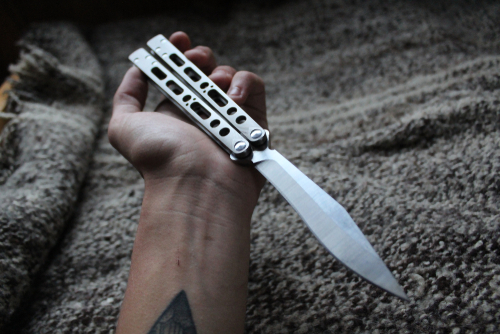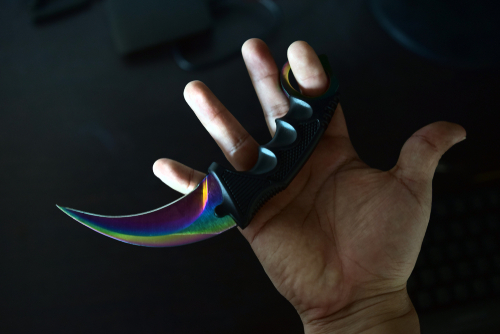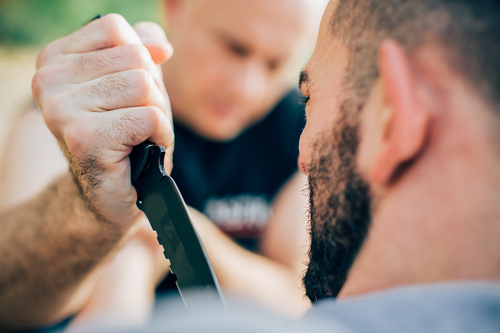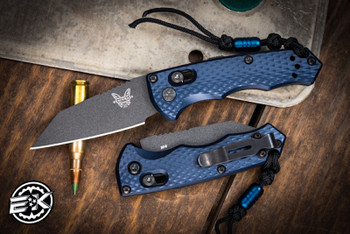3 Mistakes to Avoid When Choosing the Best Tactical Knife for Your Self-Defense Needs
Jul 31st 2018
Knives are an excellent tool to consider when looking at all of your options for self-defense. They are usually legal, easy to purchase and simple to conceal and carry. However, unlike the concealed carry education many states require for a handgun, there isn’t a lot of awareness of how to choose the best tactical knife for self-defense purposes.

There are several factors to consider when it comes to choosing a knife you may need to defend yourself with. When you’re using a knife in self-defense, it doesn’t always work the way that we’ve seen on TV and in movies. Unfortunately, people who purchase a knife for self-defense often choose the wrong knife because of these misconceptions.
The success of using a knife as a defense tool depends on the style of the knife, the blade shape and a proper amount of training. The following are some of the common mistakes people make when they purchase a knife for self-defense purposes.
1. Not familiarizing yourself with knife basics.
While it may be easier to purchase a knife than a handgun, it doesn’t mean there is less responsibility. There’s a fair amount of education and training you should be pursuing first so you know your rights and how to operate your self-defense tool properly.
Some states and municipalities regulate the size, style and mechanism of knives. There are also areas of these municipalities in which carrying a knife might not be permitted at all. If you plan to carry a knife in self-defense, it is your responsibility to know and understand the laws of your area and anywhere you travel so that you won’t end up in handcuffs.
Once you’ve learned what kind of knife you can carry in your town or state, you need to undergo some training. Personal defense training classes are often offered through local dojos and self-defense schools. Many will also offer training classes in knife fighting. During these classes, they will educate you on the different knife styles, classifications and blade shapes, what each one is designed to do and how to use them effectively against an attacker.
You will also learn the vulnerable parts of the human body to aim for with your knife so you will have more success in stopping your attacker or giving yourself time to flee. While many think they know these points already, it actually takes skill and precision to execute a knife effectively against these areas.
2. Choosing a knife for looks instead of function.
Some styles of tactical knives just look really cool. It’s an unavoidable fact and it’s part of what makes them so popular. If they’re easy to photograph and draw your eyes to them in the store, a serrated blade or Sheepsfoot blade may be your first choice.
However, just because they look nice does not mean they function well for self-defense purposes. For instance, a Sheepsfoot blade is best for first responders because it’s difficult to accidentally pierce yourself or someone else while you are cutting through materials. This doesn’t make it a great choice for self-defense unless you are planning to have plenty of time to saw through your attacker’s arm.

On the other hand, a talon blade or a Karambit knife might be just what you need to slash your attacker quickly and get away. The tip is also extra sharp for piercing and jabbing, but the point tends to be weaker than a drop point or tanto blade. Sometimes the best tactical knife for self-defense purposes isn’t the prettiest one on the shelf, but it will be the one that saves your life.
3. Measuring the use of your knife by TV and movies.
Real-life knife fights aren’t about a quick throat-slitting from behind or the perfect stab to the heart that takes your attacker down. Likely, you will be using your knife in an attack to inflict many sharp-force injuries, from slices and tears to piercings and stab wounds. The human body, especially with adrenaline pumping through it, takes a bit more to stop than just a simple stab wound.

Choose a knife with a sturdy blade that won’t break or bend when you exert a lot of pressure against it. For some, this may mean a fixed-blade knife. For others, they may choose a folding or flip-knife. Some states have repealed laws regarding switchblades, and in these states, many people prefer a switchblade or auto-open knife for self-defense purposes.
Final Thoughts
When you’re ready to choose a self-defense knife, look for a tactical survival knife that will double as a weapon and as a useful survival tool. Your knife should be something you can count on to protect your life and to utilize for hunting and survival purposes.
Finally, consider that your self-defense tool is a way for you to wound your attacker enough that you can escape. You don’t necessarily always want to wound them fatally. When you have enough training and control over your knife, you can effectively utilize it in any situation. This will reduce the chances of you hurting yourself or accidentally using too much force.

